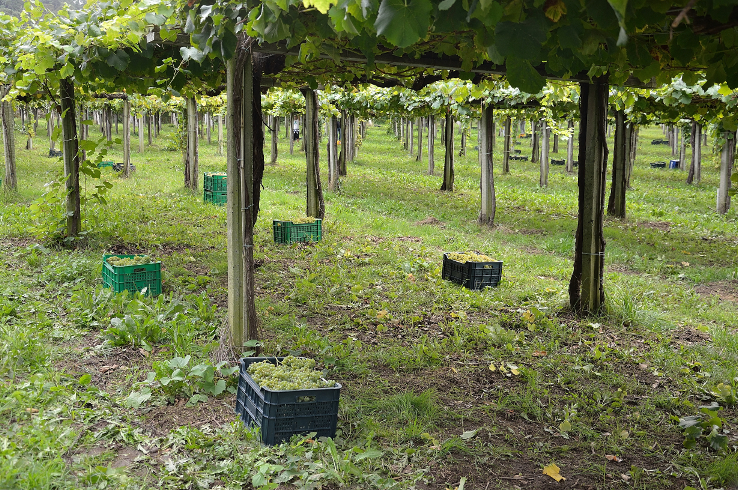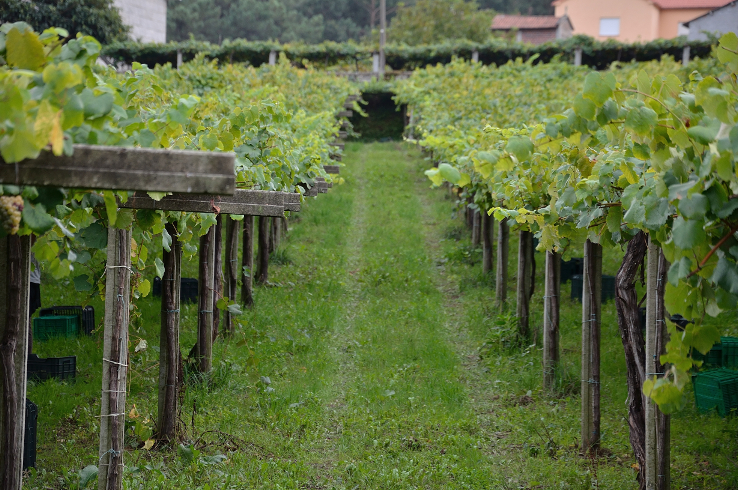2020 Viña Cartin Rías Baixas Albariño
Quintessential is the only word I can use to describe this wine. It comes from the ancestral home of Albariño, located directly on Spain’s Atlantic coast. It’s bright and refreshing… a solid weeknight staple.
Sustainable farming practices and hand-harvested.
- Tasting Notes Meyer lemon, clementine, citrus pith, honeydew, white grapefruit, marcona almond, sea salt
- Variety Albariño
- Region Spain, Rias Baixas
- Volume 750ml
- Alcohol Volume 13%
- Table Talk This wine comes from Val do Salnés, which many call the birthplace of Albariño.
$24.00
Out of stock
Viña Cartín was founded in 1977 in Spain’s Salnés Valley, the oldest of Rias Baixas’ five subregions. In 2003, Viña Cartín moved their operations to a new location—an old winery in the heart of the area—and refurbished its interior with modern technology, yet maintained the estate’s artisanal character.
Contrary to the many regional wineries who purchase fruit, Viña Cartin proudly owns and sustainably farms 50 acres of their own vines. This direct access to the source allows them to control the raw material from start to finish. The estate’s vines average 30 years in age and benefit from the influence of the nearby Atlantic ocean. The resulting wines are bright, balanced, and laden with natural acidity.
ALBARINO
A pleasantly refreshing light white wine. Most known from Rias Baixas in Spain, but additionally as Vinho Verde in Portugal. Albariño’s are generally high in acid with refreshing citrus fruit flavors and a notably saline mineral character due to the regions’ proximity to the ocean. Serve these wines well-chilled while eating fish tacos on a hot summer day, you won’t be disappointed.
GALICIA, SPAIN
Part of what can be referred to as “Green” Spain, Galicia is located in the upper north west corner of the country. Wine production here dates back to the time of the Romans. It is one of the coolest areas producing refreshingly crisp Albariño with strong mineral characteristics as well as elegant red wine from the Mencía grape. Galicia boasts five denominated wine regions (DOs) including the infamous Rías Baixas, the closest DO to the Atlantic ocean.
Related Items
-
2021 Cavallotto Dolcetto d’Alba ‘Vigna Scot’
$33.00A charming and approachable red from Piedmont, this Dolcetto offers soft tannins and a vibrant balance—an ideal introduction to Italian wine. Medium-structured, it reveals classic notes of blackberry and cherry, with an aromatic floral bouquet and subtle earthy complexity. Enjoy it now or over the next five years with everything from pizza and pasta to prosciutto, tartare, and aged cheeses.
Organic farming practices, native yeast fermentation, aged for 6 months in large Slavonian oak and only 677 cases produced.
-
2021 Clefs des Murailles ‘Vacqueyras’ Rouge Red Blend
$31.00Let’s face it, we all love CDP (Chateauneuf-du-Pape), but most of us can’t afford to pull those corks on a daily basis. That is where ‘Vacqueyras’ comes in. It’s swimming in the next lane, with eerily similar characteristics, at a lower price. This is one of my party trick wines (looks pricey and tastes pricier).
Sustainable farming practices, woman-winemaker.
-
2022 Jean Collet & Fils Saint-Bris Sauvignon
$32.00A wine with a light gold color, its liveliness reveals notes of citrus and peach with expressive fresh herbs and white flowers. The mouthfeel is generously textured and lends a tender, fruity palate with a spicy yet beautiful mineral finish. Aging is done in old French oak barrels to add a touch of roundness to soften the wine’s naturally striking acidity.
This version of Saint-Bris at Domaine Jean Collet follows suit with the Chablis range, characterized with an increased level of suppleness, compared to what is typically found with Saint-Bris wines.
Sustainable farming practices, hand-harvested, native yeast fermentation.
-
New Arrival
2024 Argaux Santa Barbara County Grenache Rosé
$30.00When we created this rosé, we want something light, refreshing, and crisp — a wine that can quench our thirst on a warm afternoon yet offer enough complexity to carry us through a meal. This wine delivers exactly that. It’s high quality without taking itself too seriously, and it’s the kind of bottle we want to drink every day — otherwise, we wouldn’t have made it.
Sustainable farming practices, no herbicides/pesticides, and less than 400 bottles produced.










